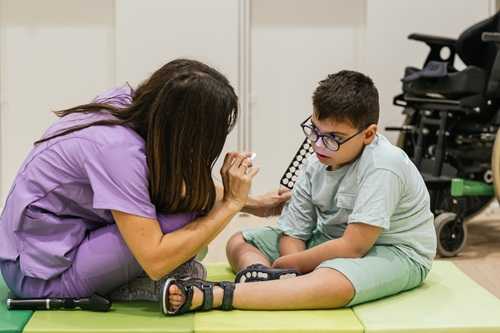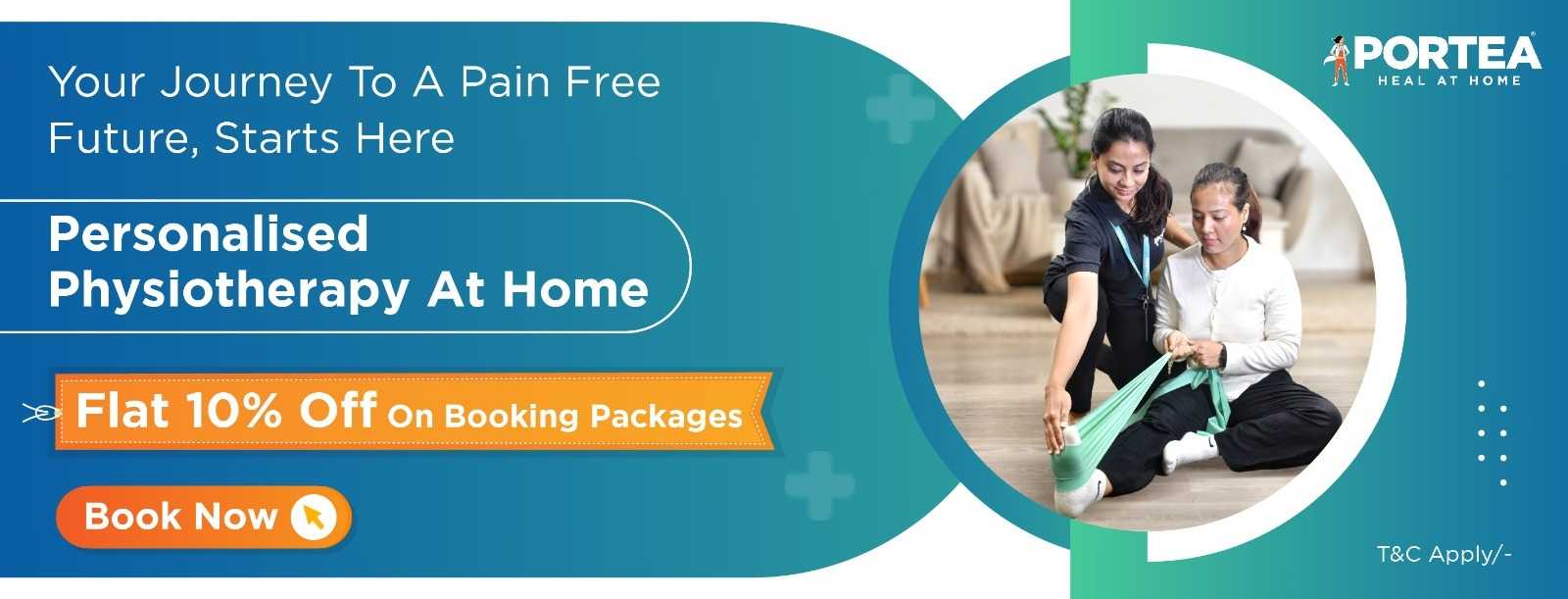
quadriplegia
Expert Physiotherapy at Home
Personalised Recovery Programmes
Trusted Physiotherapists. Real Results.
Patient Testimonials
Our Medical Team
Meet some of our experienced and dedicated healthcare professionals
Dr. Lokesh G
15 Years Experience
SPECIALIZATIONS
Experienced in Neurological rehabilitation, Orthopaedic physiotherapy, and Paediatric care
Delivers structured, high-impact treatment plans across neuro, ortho, and paediatrics—ensuring safety, comfort, and measurable recovery at every stage.
Dr. Mohammed Sarwar
15 Years Experience
SPECIALIZATIONS
Experienced in Neurological rehabilitation, Adult physiotherapy, and Paediatric care
Combines deep clinical expertise with a compassionate approach, supporting both adults and children through neuro and physical rehabilitation that promotes long-term independence and recovery.
Dr. Nelapati Divya
12 Years Experience
SPECIALIZATIONS
Skilled in Orthopaedic rehabilitation, Manual therapy techniques, and Paediatric physiotherapy
Brings a personalised, hands-on approach to healing—combining structural expertise with paediatric sensitivity to restore movement, relieve pain, and improve everyday function.
Dr. Naveen V
3 Years Experience
SPECIALIZATIONS
Trained in Pain management, Cardiac and Orthopaedic rehabilitation, Neurological care, and Neural tissue mobilisation
Brings clinical precision and empathy together—designing science-backed recovery protocols for pain relief, nerve mobilisation, and cardio-neuro-ortho rehabilitation across all age groups
Dr. Miloni Savla
2 Years Experience
SPECIALIZATIONS
Holds an MPT in Orthopaedics with a focus on Musculoskeletal rehabilitation and strength recovery
Delivers focused, movement-oriented therapy grounded in orthopaedic science—helping patients rebuild strength, restore function, and return to daily life with confidence

quadriplegia: causes, symptoms, and rehabilitation
Quadriplegia results from spinal cord injuries that occur at the cervical (neck) region of the spine. The injury disrupts the communication between the brain and the body, leading to partial or complete loss of motor control and sensation. Depending on the extent of the damage, some individuals may retain limited movement or sensation in certain areas, while others may experience total paralysis.
common causes of quadriplegia
Spinal cord injuries leading to quadriplegia can occur due to various reasons, including traumatic and non-traumatic factors. The most common causes include:
- Trauma: Road accidents, falls, sports injuries, and violent incidents can lead to spinal cord damage, causing quadriplegia.
- Medical Conditions: Diseases such as multiple sclerosis, polio, and muscular dystrophy can weaken the spinal cord and result in paralysis.
- Surgical Complications: Certain medical procedures involving the spine may lead to nerve damage, increasing the risk of quadriplegia.
- Tumours and Infections: Spinal tumours, abscesses, and infections can exert pressure on the spinal cord, affecting mobility and sensation.
symptoms and complications
Quadriplegia presents a range of symptoms that affect both motor and sensory functions. Common symptoms include:
- Loss of Movement and Sensation: Individuals lose voluntary control and feeling in the arms, legs, and torso.
- Muscle Spasms and Stiffness: Uncontrolled muscle contractions can cause discomfort and difficulty in movement.
- Bladder and Bowel Dysfunction: Spinal cord injuries affect the body’s ability to control bladder and bowel movements.
- Breathing Difficulties: Higher-level spinal injuries can impair respiratory function, requiring ventilatory support.
- Pressure Sores: Limited mobility increases the risk of skin breakdown and bedsores due to prolonged pressure on specific areas.
rehabilitation and management
Although there is no permanent cure for quadriplegia, rehabilitation focuses on maximising independence, preventing complications, and improving overall well-being. Treatment approaches include:
- Physical Therapy: Helps maintain joint flexibility, prevent muscle atrophy, and improve overall mobility through passive and assisted exercises.
- Occupational Therapy: Focuses on enhancing the ability to perform daily activities such as eating, dressing, and using adaptive devices.
- Speech and Respiratory Therapy: Beneficial for individuals with impaired speech and breathing function due to spinal cord injury.
- Assistive Technology and Mobility Aids: Wheelchairs, braces, and other devices help individuals regain some independence and mobility.
- Psychological Support: Mental health support is crucial for individuals coping with the emotional and psychological challenges of quadriplegia.
role of physiotherapy in quadriplegia rehabilitation
Physiotherapy is essential in managing quadriplegia and improving overall functionality. Specialised physiotherapists design tailored exercise programs focusing on the following:
- Strengthening remaining muscle function to enhance mobility.
- Preventing complications such as contractures and joint stiffness.
- Improving circulation and respiratory function through guided exercises.
- Training in using assistive devices to promote independence in daily life.
how portea supports quadriplegia rehabilitation
At Portea, we provide expert home-based physiotherapy services tailored to individuals with quadriplegia. Our team of skilled physiotherapists focuses on designing customised rehabilitation programs that help improve mobility, prevent complications, and enhance overall quality of life in the comfort of home.
We also specialize in providing expert physiotherapy services for post-surgical rehab, arthritis, neuro-rehab, sports injury, orthopedic physiotherapy, physiotherapy for the elderly, respiratory disorders, and more – all delivered conveniently at your home. Our dedicated team ensures you receive the personalized care you need for a smooth and successful recovery.
portea’s other physiotherapy services for various medical conditions
faqs on quadriplegia
1.What is the cause of quadriplegia?
Quadriplegia results from spinal cord injuries, strokes, or neurological conditions like ALS. Damage to the cervical spine impairs movement and sensation in all four limbs, often due to trauma, disease, or congenital disorders.
2.What is quadriplegia vs paraplegia?
Quadriplegia affects all four limbs and the torso, while paraplegia impacts only the lower body. Quadriplegia results from cervical spine injuries, whereas paraplegia stems from damage to the thoracic, lumbar, or sacral regions of the spinal cord.
3.What are quadriplegic patients?
Quadriplegic patients experience complete or partial paralysis in all four limbs due to spinal cord damage. They may require assistive devices, rehabilitation, and medical care to manage mobility, breathing, and daily activities.
4.Can quadriplegia be cured?
Quadriplegia has no cure, but treatments like physical therapy, assistive devices, medications, and surgery help improve mobility, reduce complications, and enhance quality of life. Research on spinal cord repair and stem cell therapy continues to explore potential future treatments.
5.How do quadriplegics live independently?
Quadriplegics use adaptive technologies, mobility aids, home modifications, personal caregivers, and rehabilitation to manage daily activities. Voice-controlled devices, electric wheelchairs, and smart home systems improve independence, while occupational therapy helps develop alternative ways to perform essential tasks.
6.What is incomplete vs. complete quadriplegia?
Incomplete quadriplegia allows some movement or sensation below the injury site, while complete quadriplegia results in total paralysis. The extent of function loss depends on the severity and location of spinal cord damage, influencing rehabilitation outcomes.
7.What treatments help quadriplegia?
Treatments include physical therapy, medications for pain and muscle spasms, surgery for stabilization, and assistive devices like wheelchairs. Rehabilitation programs focus on strengthening muscles, improving mobility, and adapting to daily tasks to enhance independence and overall well-being.
Doctor Consultation
Nursing
Physiotherapy
Trained Attendant
Elder Care
Mother & Baby Care
Lab Tests
Medical Equipment
Speciality Pharma
Critical Care











